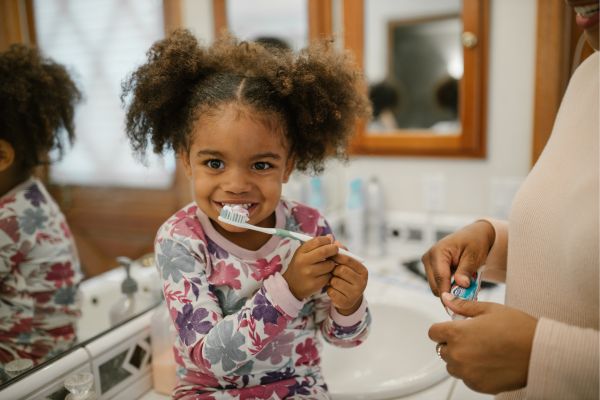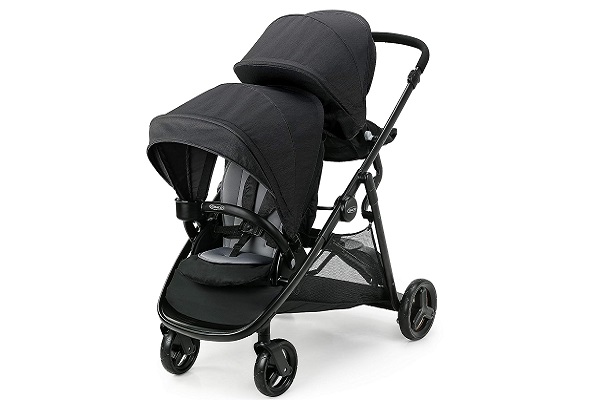A child’s smile is priceless, and promoting good oral health habits sets the stage for a lifetime of healthy teeth. But with so much information available, parents can be bombarded with questions. Here, we answer five of the most common concerns to empower you in keeping your child’s pearly whites sparkling:
#1. When Should I Start Brushing My Child's Teeth?
You may be surprised to learn that oral hygiene starts even before your child’s first tooth emerges. You can gently wipe your baby’s gums with a clean, damp cloth after feeding him from birth. This removes leftover milk or formula that may contain bacteria. As soon as she flashes that first pearly white, it’s time to brush! Use a soft-bristle baby toothbrush specifically designed for little mouths. At this stage, a dab of fluoride-free toothpaste (about the size of a grain of rice) is optional, but consult your paediatrician for guidance.
By age 3, your child will likely have most of their baby teeth. Here’s where the routine kicks in:
- Brush twice a day, for two minutes each time.
- Use a pea-sized amount of fluoridated toothpaste for children.
- Until your child can brush effectively (around age 6 or 7), supervise or help them brush to ensure all surfaces are cleaned.
#2. At What Age Does My Child Need To See A Dentist?

The American Academy of Pediatric Dentistry (AAPD) recommends scheduling your child’s first dental visit for their first birthday or within six months of their first tooth emerging – whichever comes first. This initial visit establishes a dental home for your child, allowing the dentist to monitor their development, identify potential problems early, and answer any questions you may have.
Regular dental checkups, usually every six months, are essential throughout childhood. These visits include cleanings, checks for cavities and gum disease, and fluoride treatments to strengthen the enamel. Early detection and intervention can prevent future complications and ensure a lifetime of healthy teeth.
#3. Does My Child Need Orthodontics?
Childhood is a prime time to address any potential orthodontic concerns. During your child’s regular dental checkups, the dentist will monitor their jaw development, teeth alignment, and bite. If they identify an issue that could benefit from braces or other orthodontic intervention, they will refer you to a qualified orthodontist.
Common reasons for orthodontic treatment include:
- Crowding: When there’s not enough space in the jaw for all the teeth to erupt correctly.
- Spacing: Gaps between teeth that can affect chewing or speech.
- Malocclusion: Misalignment of the bite, where the upper and lower jaws don’t meet correctly.
- Open bite: When the upper and lower front teeth don’t touch when biting down.
Early intervention with orthodontics can improve the appearance of your child’s smile and address potential functional issues related to biting and chewing. The American Association of Orthodontists (AAO) recommends an initial orthodontic evaluation by age 7. This allows for early detection and treatment planning if necessary.
#4. Can My Baby Get Tooth Decay?
Unfortunately, yes. While baby teeth are temporary, they play a vital role in speech development, chewing, and guiding the permanent teeth into place. Tooth decay, also known as cavities, can occur in baby teeth like in adult teeth.
The culprit? Bacteria that thrive on sugars in leftover milk, formula, or sugary drinks. These bacteria produce acid that erodes tooth enamel, leading to cavities. Here are some tips to prevent baby bottle tooth decay:
- Never put your baby to sleep with a bottle containing milk, formula, juice, or sweetened drinks.
- After feedings, wipe your baby’s gums with a clean, damp washcloth.
- Start brushing your baby’s teeth twice daily as soon as the first tooth erupts.
- Limit sugary drinks and introduce water early on.
#5. What Other Dental Problems Can Occur?
Besides tooth decay, here are some other dental problems that can affect children:
- Gum disease: Gingivitis, the early stage of gum disease, can occur in children with poor oral hygiene. It causes inflammation and redness of the gums and, if left untreated, can progress to periodontitis, damaging the jawbone.
- Trauma: Accidents can happen, and chipped or broken teeth are a common concern. If your child experiences dental trauma, seek prompt dental care.
- Mouth ulcers: Canker sores and other mouth ulcers can be uncomfortable for children. Although these are usually harmless and resolve independently, consult your dentist if they are persistent or cause severe discomfort.
- Thrush: This fungal infection can cause white patches to form on the tongue and inner cheeks. It’s more common in babies but can occur in older children, too. Antifungal medication is typically used for treatment.
Diet and Habits for Healthy Teeth
A balanced diet of calcium and vitamins is essential for strong teeth and healthy gums. Here are some dietary tips to promote good oral health in children:
- Limit sugary foods and drinks: Sugary treats should be occasional, and water should be the primary beverage.
- Include plenty of fruits and vegetables: These provide essential vitamins and minerals for healthy teeth and gums.
- Calcium-rich foods: Milk, cheese, yoghurt, and leafy greens are all excellent sources of calcium, which helps build strong tooth enamel.
- Fluoride: Fluoride strengthens tooth enamel and helps prevent cavities. Fluoridated water is the primary source, but fluoride supplements are sometimes recommended. Consult your dentist for guidance.
Making Brushing Fun
Brushing twice a day can feel like a chore for some children. Here are some tips to make it a more enjoyable experience:
- Choose a colourful, child-sized toothbrush with their favourite cartoon character.
- Use a fun, flavoured toothpaste (fluoride-free for children under 3).
- Play a two-minute timer or sing a favourite song while brushing.
- Let your child choose their favourite coloured floss (once flossing is recommended).
- Make brushing a family activity for everyone.
Building Healthy Habits for a Lifetime
By establishing good oral hygiene habits early on, you are setting your child up for a lifetime of healthy teeth and confident smiles. Regular dental checkups, proper brushing and flossing techniques, and a healthy diet play essential roles. Remember, you are your child’s role model, so let your healthy oral hygiene habits shine through!
Additional Resources:
- American Academy of Pediatric Dentistry (AAPD): https://www.aapd.org/
- American Association of Orthodontists (AAO): https://aaoinfo.org/
- National Institute of Dental and Craniofacial Research: https://www.nidcr.nih.gov/
Remember, this information is for general knowledge and should not be a substitute for professional dental advice. Always consult your child’s dentist for personalized recommendations and to address any specific concerns you may have.





